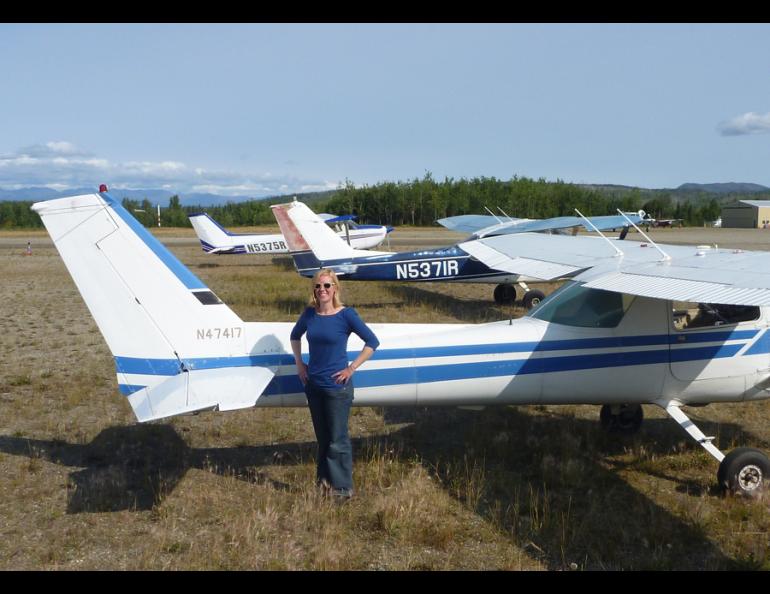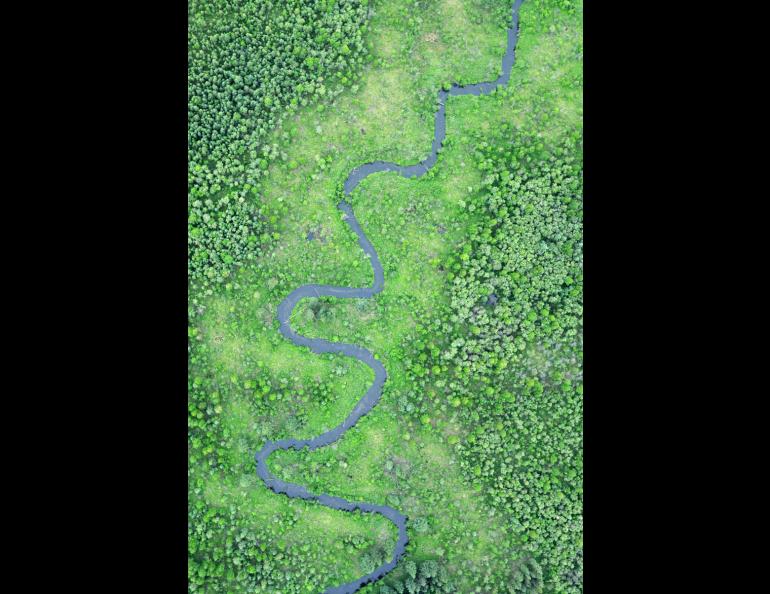

Astronaut recruit: Alaska makes a good analog for space
Jessica Cherry spends her favorite moments looking at Alaska from above. As a new recruit for a class of astronaut candidates, she may someday view the world from miles higher.
Cherry, 37, is a pilot and professor at the University of Alaska Fairbanks’ International Arctic Research Center and Institute of Northern Engineering. She flies small aircraft all over the state for fun and research. She is also a member of the newest class of “Astronauts for Hire.”
Astronauts for Hire is a private, nonprofit version of NASA’s astronaut training program. After advancing to NASA’s final astronaut selection round in 2013, Cherry applied for and landed a volunteer position with the space startup. Some Astronauts for Hire will fly suborbital space vehicles like the one being launched next spring by Virgin Galactic owner Richard Branson. Others will pilot commercial vehicles that will resupply the International Space Station.
Cherry’s flying skills (she has instrument and commercial ratings) helped her land a spot with five other selectees in the program. She owns a Cessna 172 and flies in others. She also knows how to fly unmanned aeronautical systems. Cherry, who has lived in Alaska eight years, left the farmlands of Nebraska after high school and headed to New York City to attend Columbia University. She stayed in the big city for a decade.
Like many quiet people, Cherry is prone to understatement. In an interview, she did not mention her curriculum vitae is 11 pages long. On it: from Columbia, masters degrees in oceanography and climatology followed by a Ph.D in climatology/hydrology, all three earned in six years. A semester under the bubble in Biosphere 2 (a prototype Mars colony) in Oracle, Arizona. Math tutor for at-risk boys in Harlem, New York. Wall Street quantitative analyst. Shipboard on research vessels in the Bering, Chukchi and Beaufort, Irminger (off Iceland), Laptev, Kara and Caribbean seas. Owner of Northern Science Services, the company she and her husband Bob Busey started up to perform science from their airplane.
Cherry took her first aviation class when she was in elementary school. She started flying lessons one year after coming to Alaska. She now owns the single-engine Cessna she parks at Fairbanks International Airport. When she flies, she keeps a camera within reach. She likes to take shots of landscape features, like drained lakes ringed with spiky black spruce, that catch her eye for both what they reveal about change and because they are beautiful. She likes doing science research that benefits people and the environment, but she also likes to write and make films because it “brings humanity back to my science.”
Cherry doesn’t really know where the astronaut training program will take her, but she thinks Alaska, home to the Kodiak Launch Complex, Poker Flat Research Range and heaps of scientists and pilots, is a great place for the aerospace industry.
“There are a lot of links between space research and living in Alaska,” she said.
One example she thought of is her work on automated weather stations throughout the state. Clinging to a metal tower in 20 below darkness is somewhat like working on another planet.
“I’ve thought, ‘if I drop this bolt, I’m toast,’” she said.
She also points out that our northern homes that combat frigid air much of the year are “delicate operating systems” that many homeowners know like surgeons know the human body.
“If you have a handful of Ivy League degrees, your frozen toilet doesn’t care about that,” she said.
“It’s the same in space,” she said. “In a way, when we pull on our bunny boots and our parkas and head outside to fix our fuel pumps or our frozen plumbing we might as well be doing a spacewalk on the International Space Station.”





